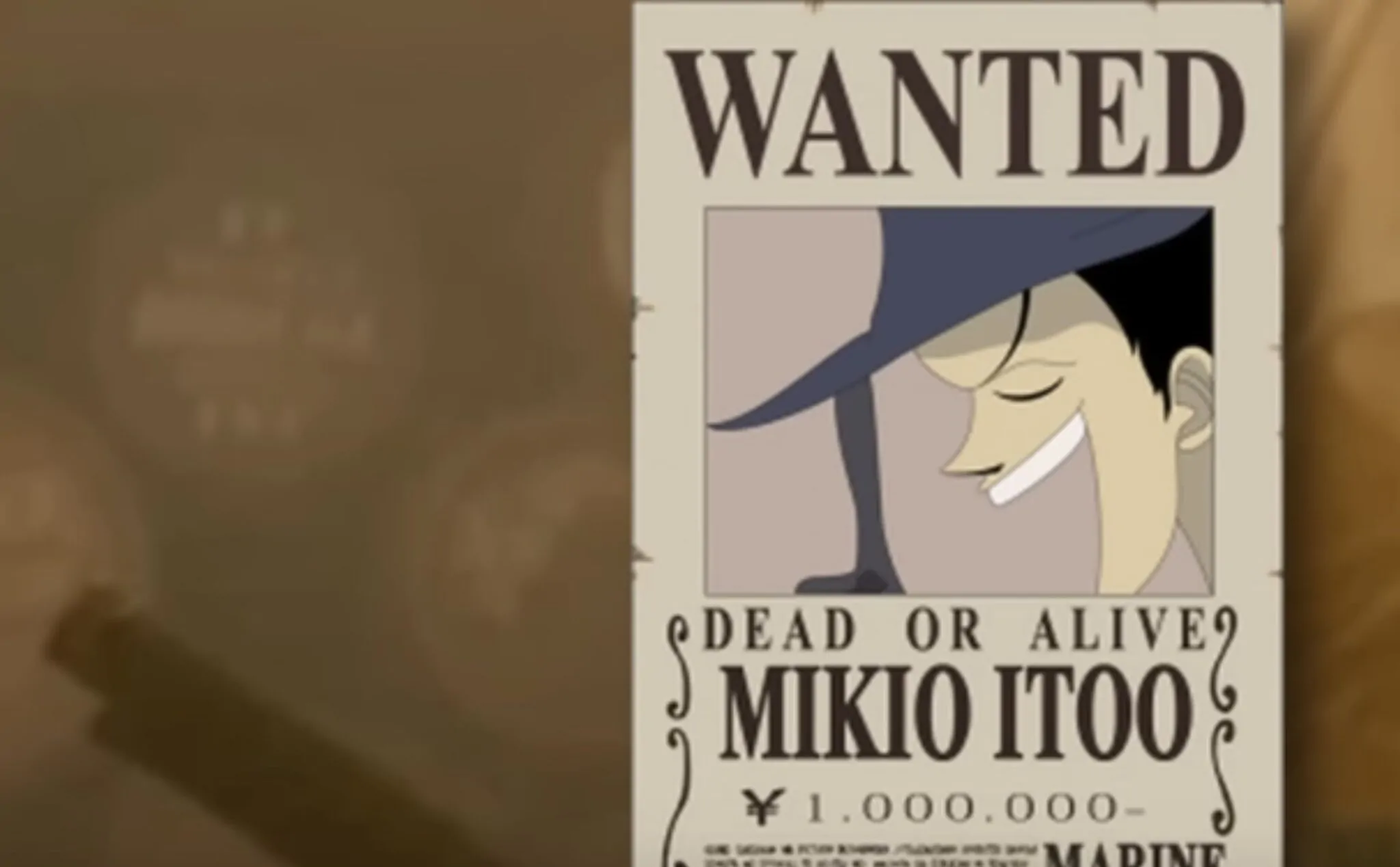From the very beginning, One Piece has been a series built on hidden layers — secrets tucked between the panels, jokes buried in plain sight, and names that seem meaningless until decades later. But even Eiichiro Oda’s earliest work hinted at this obsession with detail.
In Volume 1, there’s a curious name that shows up not once, but twice: Mikio Itoo. First, it appears on a wanted poster hanging in the background. Then, a few pages later, the same name surfaces again — this time printed on a bottle label. There’s no character by that name, no story reference, no payoff. It’s simply there, a phantom signature that most readers skip past without ever noticing.

Who exactly is Mikio Itoo? The answer has never been confirmed. Some fans believe it was a quiet nod to a real-life friend or assistant of Oda’s during his early Jump days. Others see it as one of the first examples of Oda’s playful self-referencing — a kind of “where’s Waldo” moment designed to see who among his readers was paying attention.
What makes it special isn’t the name itself, but what it represents: a glimpse into Oda’s creative mind before One Piece became a global phenomenon. Even in those first chapters, he was already crafting a world that felt alive beyond its main story — one filled with unseen faces, offhand graffiti, and background objects carrying their own silent history.
The “Mikio Itoo” cameo is proof that Oda’s storytelling philosophy was intact from day one: nothing in his world is random. Every detail, no matter how small, contributes to the illusion that the One Piece universe existed long before the reader ever opened the book.
It’s this sense of lived-in authenticity — the feeling that there’s more happening beyond the frame — that makes One Piece endlessly re-readable. Even now, more than twenty-five years later, fans continue to discover new details hiding in the margins of those early panels.
So next time you revisit Volume 1, look closely at the walls, bottles, and posters in the background. Somewhere in that inked chaos, Mikio Itoo is still there — a silent reminder that from the very first chapter, Oda was already playing the long game.

